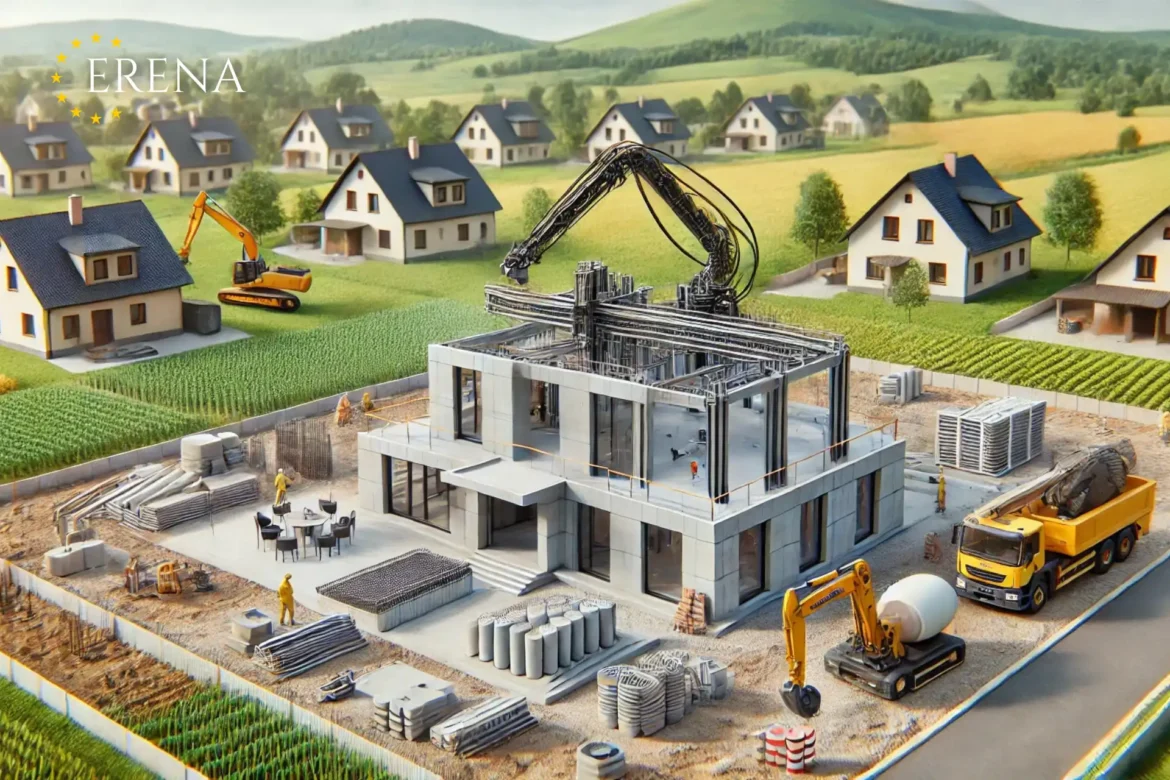The rise of 3D printing technology in the construction industry is revolutionizing how homes are designed and built. With multiple European countries adopting this innovative approach, 3D printing is paving the way for faster, more affordable, and sustainable home construction.
What is 3D Printing in Construction?
3D printing in construction refers to the use of large-scale printers to build homes layer by layer using materials like concrete or composite mixtures. This groundbreaking method can create everything from foundations to walls and entire structures, offering increased flexibility and reduced labor costs compared to traditional building methods.
Benefits of 3D Printed Homes
- Faster Construction
Traditional homebuilding can take months, while 3D-printed homes can be completed in weeks. Printing the walls of a house alone takes just 24-48 hours. - Cost-Effective
3D printing reduces labor costs and material waste, making construction more affordable. The savings can be up to 30% compared to traditional methods. - Sustainability
Using eco-friendly materials and minimizing waste during construction helps reduce the environmental impact, making 3D printing a sustainable alternative. - Design Flexibility
With 3D printing, architects can create customized homes with intricate, complex designs that would be difficult or expensive to achieve through traditional construction methods.
3D Printing in Construction Across Europe
Several European countries are leading the way in adopting 3D technology for homebuilding. Let’s look at some notable projects:
Netherlands: A Leader in 3D Printing Homes
The Netherlands has pioneered 3D-printed homes, with Eindhoven’s 3D concrete house being a key project. The “Project Milestone” in Eindhoven is set to create a series of 3D-printed homes, proving that this technology can be both practical and desirable for modern living.
Price Range: 3D-printed homes in the Netherlands typically cost between €150,000 and €250,000, depending on size and design.
Germany: Combining Innovation with Sustainability
Germany’s first 3D-printed home was completed in 2021 in Beckum. These homes are designed with sustainability in mind, using eco-friendly materials and energy-efficient techniques. This development is part of Germany’s plan to address housing shortages and environmental goals.
Price Range: A 3D-printed house in Germany can cost between €120,000 and €200,000.
Italy: Focus on Sustainable Living
In Italy, the first 3D-printed house was completed in Massa Lombarda using natural, sustainable materials like clay. This project highlights Italy’s commitment to combining technology with eco-friendly practices for a greener future.
Price Range: A 3D-printed house in Italy generally costs €100,000 to €180,000.
Spain: Tackling Affordable Housing
Spain has embraced 3D printing as a solution to its affordable housing crisis. The first 3D-printed house in Spain was built by Acciona, a construction company focused on addressing housing shortages through fast and affordable construction methods.
Price Range: The cost of 3D-printed homes in Spain ranges from €100,000 to €180,000.
Challenges Facing 3D Printing in Construction
While 3D printing offers many advantages, there are still challenges:
- Regulations: Different countries have varying building codes, and many have not yet adapted to 3D construction methods. Clearer regulations are needed for widespread adoption.
- Material Limitations: Though concrete is commonly used in 3D printing, there is still research to be done on expanding material options for better durability and flexibility.
- Cost of Equipment: Though the process is cost-effective, the high initial cost of 3D printers and the need for specialized equipment can be a barrier for smaller construction firms.
The Future of 3D Printed Homes in Europe
Despite the challenges, the future for 3D printing in home construction looks promising. With increasing interest from both governments and developers, the technology’s potential to solve housing crises and reduce environmental impact is becoming more apparent. As regulations and technology evolve, 3D-printed homes may become a common sight across Europe in the next decade.
Conclusion
3D printing offers exciting possibilities for the construction of affordable, sustainable homes in Europe. With faster build times, lower costs, and a focus on eco-friendly materials, this technology is set to reshape the future of homebuilding. The revolution has begun, and 3D-printed homes are no longer just a concept—they’re becoming a reality.

